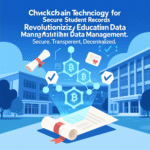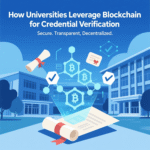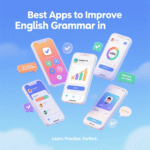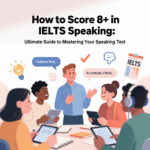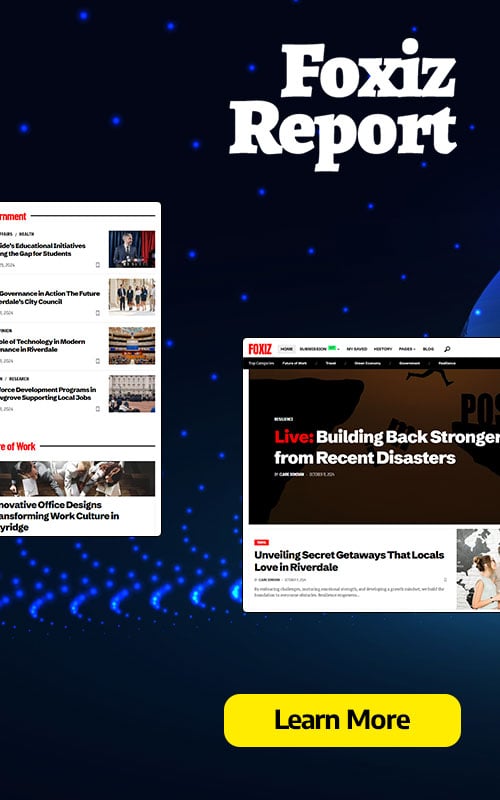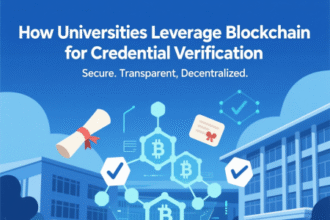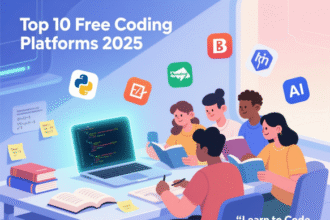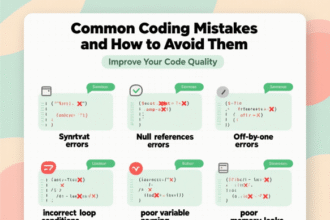The education sector is undergoing a transformative shift, driven by technological advancements that promise to enhance efficiency, security, and accessibility. Among these innovations, blockchain technology stands out as a game-changer. Originally developed as the backbone of cryptocurrencies like Bitcoin, blockchain has evolved into a versatile tool with applications far beyond finance. In education, blockchain applications are redefining how institutions manage records, verify credentials, and foster innovative learning environments. This article explores the best blockchain applications in education, delving into their benefits, real-world implementations, and future potential to reshape the academic landscape.
- Understanding Blockchain Technology in Education
- Key Blockchain Applications in Education
- 1. Secure Credential Verification
- 2. Transparent Academic Record Management
- 3. Combating Plagiarism and Protecting Intellectual Property
- 4. Decentralized Learning Platforms
- 5. Smart Contracts for Administrative Efficiency
- 6. Micro-Credentials and Digital Badges
- 7. Secure Data Sharing and Privacy
- 8. Tokenized Incentives for Student Engagement
- 9. Accreditation and Institutional Transparency
- 10. Lifelong Learning and Career Portfolios
- Benefits of Blockchain in Education
- Challenges of Implementing Blockchain in Education
- Real-World Success Stories
- MIT and Blockcerts
- University of Melbourne
- BitDegree’s Tokenized Learning
- Sony Global Education and IBM
- The Future of Blockchain in Education
- Recommendations for Implementing Blockchain in Education
- Frequently Asked Questions (FAQs)
Understanding Blockchain Technology in Education
Blockchain is a decentralized, immutable ledger that records data in a secure and transparent manner. Each piece of data, or “block,” is cryptographically linked to the previous one, forming a “chain” that is resistant to tampering. This technology ensures that once information is recorded, it cannot be altered without consensus from the network, making it ideal for applications requiring trust and verifiability. In education, blockchain’s core features—decentralization, security, transparency, and immutability—address longstanding challenges such as fraud, inefficiency, and lack of accessibility.
Why Blockchain Matters for Education
Educational institutions face numerous challenges, including managing vast amounts of student data, ensuring the authenticity of credentials, and combating issues like plagiarism and fraud. Traditional systems often rely on centralized databases, which are vulnerable to breaches and require labor-intensive verification processes. Blockchain offers a solution by providing a secure, decentralized platform that streamlines operations and enhances trust. By leveraging blockchain applications in education, institutions can reduce administrative burdens, empower students, and create a more inclusive learning ecosystem.
Key Blockchain Applications in Education
Blockchain’s potential in education is vast, with applications spanning credential verification, data management, and innovative learning models. Below, we explore the most impactful use cases that are transforming the education sector.
1. Secure Credential Verification
One of the most prominent blockchain applications in education is the issuance and verification of academic credentials, such as degrees, diplomas, and certificates. Traditional paper-based credentials are prone to fraud, with fake degrees costing institutions millions annually. Blockchain addresses this by storing credentials on an immutable ledger, allowing employers and institutions to verify authenticity instantly.
- How It Works: When a student earns a credential, it is recorded as a digital asset on the blockchain. This record includes details like the issuing institution, date, and student information, all secured with cryptographic signatures. Employers or other institutions can access a verified copy via a secure link, eliminating the need for manual verification.
- Real-World Example: The Massachusetts Institute of Technology (MIT) partnered with Learning Machine to develop Blockcerts, an open-standard platform for issuing blockchain-based credentials. Since 2017, MIT has issued digital diplomas that graduates can share securely with employers, reducing verification time and costs.
- Benefits:
- Eliminates credential fraud by ensuring records are tamper-proof.
- Simplifies verification for employers and academic institutions.
- Empowers students with control over their digital credentials.
2. Transparent Academic Record Management
Managing student records, such as transcripts and attendance data, is a time-consuming and error-prone process in traditional systems. Blockchain streamlines this by creating a decentralized, transparent ledger for storing and sharing academic records.
- Implementation: Each student’s academic journey—grades, courses, and achievements—is recorded on the blockchain. Smart contracts, self-executing agreements coded into the blockchain, automate tasks like grade calculations and transcript generation.
- Case Study: The University of Melbourne has adopted blockchain to issue digital credentials, enabling students to share verified transcripts with employers instantly. This reduces administrative workload and enhances data security.
- Advantages:
- Reduces administrative costs by automating record-keeping.
- Enhances data security with encryption and decentralization.
- Provides students with lifelong access to their records.
3. Combating Plagiarism and Protecting Intellectual Property
Plagiarism remains a significant issue in academia, undermining the integrity of research and assignments. Blockchain offers a solution by timestamping and securely storing academic content, ensuring proper attribution and protecting intellectual property.
- Mechanism: Research papers, assignments, and creative works are stored on the blockchain with a timestamp and cryptographic hash. This creates a verifiable record of ownership, making it impossible to claim another’s work without detection.
- Example: A3Logics, a blockchain development company, has developed solutions to secure research data, ensuring that academic content remains unaltered and properly attributed.
- Benefits:
- Protects researchers and students from plagiarism.
- Establishes proof of ownership for intellectual property.
- Enhances trust in academic publications.
4. Decentralized Learning Platforms
Blockchain enables the creation of decentralized online learning platforms that connect students and educators without intermediaries. These platforms leverage blockchain applications in education to offer accessible, affordable, and engaging learning experiences.
- Functionality: Blockchain-based platforms use smart contracts to manage course delivery, track progress, and issue rewards. Students can earn tokens for completing courses or contributing to discussions, fostering engagement.
- Example: BitDegree, a blockchain-powered e-learning platform, offers tokenized scholarships and rewards for course completion. This incentivizes learning and makes education more accessible, particularly for underserved communities.
- Advantages:
- Reduces costs by eliminating centralized platform fees.
- Encourages student engagement through gamification.
- Promotes inclusivity by providing access to global learners.
5. Smart Contracts for Administrative Efficiency
Smart contracts are self-executing agreements with predefined rules coded into the blockchain. In education, they automate administrative tasks, reducing errors and improving efficiency.
- Applications: Smart contracts can automate student enrollment, fee payments, and course material distribution. For example, a smart contract can release course content to a student once payment is confirmed, eliminating manual processing.
- Case Study: Sony Global Education, in partnership with IBM, developed a blockchain platform that uses smart contracts to manage student records across multiple institutions, ensuring seamless data sharing and verification.
- Benefits:
- Minimizes human error in administrative processes.
- Saves time and resources for institutions.
- Enhances transparency in financial transactions.
6. Micro-Credentials and Digital Badges
Micro-credentials, or digital badges, certify specific skills or competencies, offering a flexible alternative to traditional degrees. Blockchain ensures these credentials are secure, verifiable, and portable.
- Process: Institutions issue micro-credentials on the blockchain, which students can store in digital wallets and share with employers. These credentials are tamper-proof and easily accessible.
- Example: The Open Badge Passport, a blockchain-based service, allows institutions to issue and manage digital badges, enabling students to showcase their skills to potential employers.
- Advantages:
- Validates niche skills for career advancement.
- Enhances employability by providing verifiable credentials.
- Supports lifelong learning through modular certifications.
7. Secure Data Sharing and Privacy
Data security is a critical concern in education, where sensitive student information is often stored in vulnerable centralized systems. Blockchain ensures secure data sharing while protecting student privacy.
- Mechanism: Blockchain uses advanced encryption to secure student data, allowing only authorized parties to access it. Students can control who views their records, enhancing privacy.
- Example: Parchment, a digital credential service, uses blockchain to securely store and share student records, ensuring data integrity and privacy.
- Benefits:
- Protects against data breaches and unauthorized access.
- Empowers students with control over their data.
- Facilitates secure data sharing between institutions.
8. Tokenized Incentives for Student Engagement
Gamification is transforming education by incentivizing student participation. Blockchain enables tokenized reward systems, where students earn digital tokens for academic achievements or engagement.
- How It Works: Students earn tokens for completing assignments, participating in discussions, or achieving milestones. These tokens can be redeemed for course credits, discounts, or other rewards.
- Example: BitDegree’s platform awards tokenized scholarships for course completion, motivating students to engage actively in their learning.
- Benefits:
- Boosts student motivation and participation.
- Creates a dynamic and interactive learning environment.
- Encourages continuous learning through rewards.
9. Accreditation and Institutional Transparency
Accrediting educational institutions is a complex process that varies by region. Blockchain streamlines accreditation by providing a transparent record of institutional quality and performance.
- Implementation: Institutions can store accreditation data, such as faculty qualifications and program outcomes, on the blockchain. This allows regulatory bodies to verify compliance efficiently.
- Example: The University of Nicosia in Cyprus uses blockchain to manage its accreditation records, ensuring transparency and reducing verification costs.
- Advantages:
- Simplifies the accreditation process for institutions.
- Enhances trust in institutional quality.
- Reduces administrative overhead for regulatory bodies.
10. Lifelong Learning and Career Portfolios
Blockchain enables the creation of lifelong learning portfolios that track an individual’s educational and professional achievements over time. These portfolios provide a comprehensive, verifiable record of skills and qualifications.
- Process: All educational achievements—degrees, micro-credentials, and professional certifications—are stored on a blockchain-based portfolio. Individuals can share this portfolio with employers or institutions as needed.
- Example: The Education Blockchain Initiative, launched by the American Council on Education, explores how blockchain can create interoperable learning records to support lifelong learning.
- Benefits:
- Reduces CV fraud by providing verifiable records.
- Simplifies transitions between educational institutions and jobs.
- Supports continuous professional development.
Benefits of Blockchain in Education
The adoption of blockchain applications in education offers numerous benefits that address longstanding challenges in the sector. These advantages include:
- Enhanced Security: Blockchain’s cryptographic encryption protects sensitive data from breaches and unauthorized access.
- Transparency and Trust: Immutable records ensure that academic data is accurate and verifiable, fostering trust among stakeholders.
- Cost Efficiency: By automating administrative tasks and reducing fraud, blockchain lowers operational costs for institutions.
- Accessibility: Decentralized platforms make education more accessible, particularly for underserved communities.
- Empowerment: Students gain ownership of their credentials and data, enabling greater control over their academic journey.
- Innovation: Blockchain fosters new learning models, such as tokenized incentives and peer-to-peer platforms, that enhance engagement.
Challenges of Implementing Blockchain in Education
While blockchain applications in education hold immense potential, their adoption faces several challenges. Addressing these hurdles is critical to realizing blockchain’s full impact.
Scalability Issues
Blockchain networks, particularly those using proof-of-work consensus mechanisms, can be slow and resource-intensive. This poses challenges for handling the large volumes of data generated by educational institutions.
- Solution: Adopting energy-efficient consensus mechanisms, such as proof-of-stake, can improve scalability and reduce costs.
High Implementation Costs
Developing and maintaining blockchain systems requires significant investment, which may deter smaller institutions.
- Solution: Partnering with blockchain development companies like Appinventiv or Antier Solutions can provide cost-effective, tailored solutions.
Regulatory Compliance
Data protection laws, such as the General Data Protection Regulation (GDPR), impose strict requirements on data storage and sharing, complicating blockchain adoption.
- Solution: Designing blockchain systems with privacy-by-design principles ensures compliance with regulations.
Lack of Awareness and Expertise
Many educators and administrators lack familiarity with blockchain technology, hindering its adoption.
- Solution: Offering training programs and collaborating with blockchain experts can bridge this knowledge gap.
Real-World Success Stories
Several institutions and organizations have successfully implemented blockchain applications in education, demonstrating their transformative potential.
MIT and Blockcerts
MIT’s partnership with Learning Machine to develop Blockcerts has revolutionized credential issuance. Graduates receive digital diplomas that are verifiable instantly, reducing fraud and streamlining hiring processes.
University of Melbourne
The University of Melbourne uses blockchain to issue digital credentials, enabling students to share verified transcripts with employers and other institutions efficiently.
BitDegree’s Tokenized Learning
BitDegree’s blockchain-based platform incentivizes learning through tokenized rewards, making education engaging and accessible for students worldwide.
Sony Global Education and IBM
Sony’s collaboration with IBM has created a blockchain platform that manages student records across institutions, ensuring seamless data sharing and verification.
The Future of Blockchain in Education
The future of blockchain applications in education is bright, with emerging trends poised to further transform the sector. These include:
- Integration with AI and IoT: Combining blockchain with artificial intelligence and the Internet of Things can create personalized, secure learning environments.
- Global Credential Recognition: Blockchain can facilitate cross-border credential verification, simplifying international education and employment.
- Decentralized Education Ecosystems: Blockchain-based platforms can connect learners, educators, and employers globally, creating a more inclusive education system.
- Sustainability Initiatives: Blockchain can support sustainability education by tracking and verifying environmental credentials and initiatives.
Recommendations for Implementing Blockchain in Education
To successfully adopt blockchain technology, educational institutions should consider the following recommendations:
- Partner with Experts: Collaborate with reputable blockchain development companies like SoluLab or A3Logics to design tailored solutions.
- Start Small: Pilot blockchain applications in specific areas, such as credential verification, before scaling to broader use cases.
- Ensure Compliance: Design systems that adhere to data protection regulations to avoid legal challenges.
- Educate Stakeholders: Provide training for educators, administrators, and students to increase blockchain literacy.
- Focus on Sustainability: Adopt energy-efficient blockchain solutions to align with environmental goals.
Frequently Asked Questions (FAQs)
- What is blockchain technology in education? Blockchain is a decentralized, secure ledger used to store and manage educational data, such as credentials, transcripts, and research, ensuring transparency and immutability.
- How does blockchain prevent academic fraud? Blockchain creates tamper-proof records of credentials and academic achievements, making it impossible to forge or alter data without network consensus.
- What are smart contracts in education? Smart contracts are self-executing agreements coded into the blockchain that automate tasks like enrollment, fee payments, and course material distribution.
- Can blockchain make education more accessible? Yes, blockchain-based platforms reduce costs, eliminate intermediaries, and provide global access to educational resources, benefiting underserved communities.
- What are the benefits of blockchain-based credentials? Blockchain-based credentials are secure, verifiable, and portable, simplifying verification for employers and reducing fraud.
- How does blockchain protect student data? Blockchain uses advanced encryption and decentralization to secure student data, allowing only authorized access and protecting against breaches.
- What is a blockchain-based learning platform? A blockchain-based learning platform uses decentralized technology to deliver courses, track progress, and issue rewards, fostering engagement and accessibility.
- How can blockchain reduce administrative costs? By automating tasks like record-keeping and verification, blockchain minimizes manual processes, saving time and resources for institutions.
- What are micro-credentials in blockchain? Micro-credentials are digital badges certifying specific skills, stored on the blockchain for secure, verifiable sharing with employers.
- How does blockchain combat plagiarism? Blockchain timestamps and encrypts academic content, creating a verifiable record of ownership to prevent plagiarism.
- What are the challenges of blockchain in education? Challenges include scalability, high implementation costs, regulatory compliance, and lack of expertise among educators.
- How can institutions adopt blockchain technology? Institutions can partner with blockchain developers, start with pilot projects, ensure compliance, and educate stakeholders.
- What is the role of tokenized incentives in education? Tokenized incentives reward students for engagement and achievements, boosting motivation and participation.
- Can blockchain support lifelong learning? Yes, blockchain creates lifelong learning portfolios that track educational and professional achievements, simplifying career transitions.
- What is the future of blockchain in education? The future includes global credential recognition, AI integration, and decentralized ecosystems, enhancing accessibility and innovation.




